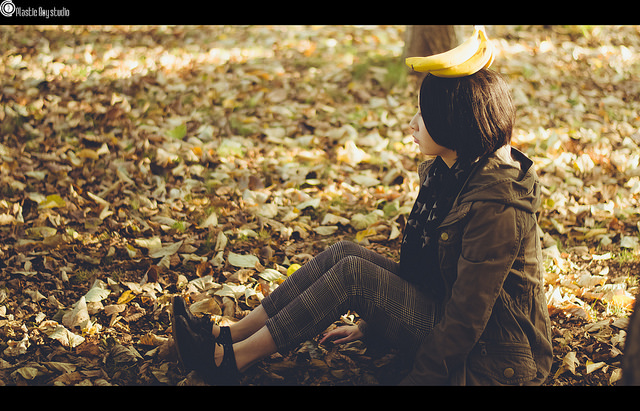
When I was 11 years old, my family moved to a new house.
I insisted to my mom, an exquisite interior decorator, on decorating my own room, all by myself.
I hung on the walls letters from my friends, pictures of all of them, a portrait of Guru Nanak (the founder of my religion, Sikhism), my childish doodles, elegant photographs, postcards of all the places I had been, and posters all interspersed among one another.
I had Victorian dolls inhabiting the same space as my childhood stuffed animals. Modern technology and antique furniture, pink and blue, gold and silver, world maps and books and photos of hot guys, all in my bedroom.
I vividly remember my mom, upon seeing my work, saying, “I don’t understand. What’s the theme?” “These are all things I like,” I responded innocently. The theme made perfect sense to me.
Looking back, I do not believe that my room was particularly aesthetically pleasing. I know that if my mom had decorated my room, it would have looked like a meticulous display from Pottery Barn Kids. I know that my contradictions clashed. But instead of trying to smooth them out to create something clean and streak-free, I subconsciously wished to embrace them. To unite them all into my own little sanctuary. Though I wasn’t aware of it at the time, I did not want to leave any part of me out.
Fourteen years later, I still grapple with the reconciliation of my now very conscious need for order and control, for perfect aestheticism, with my desire to show off with pride the living contradiction that I am. My friends always tease me, telling me that I’m the only hard-core feminist they know who also loves pink and princesses and pearls. I walked into an “Intro to R Programming” course with my pink notebook covered in silver sparkles when a classmate commented that he got the same notebook for his 7-year-old daughter.
Another friend of mine can’t get over how funny it is that I’m such an advocate for empowering young girls to pursue anything they set their minds to and for getting rid of the labeling of “girls’ toys” and “boys’ toys,” yet my room today is covered with stereotypical “girls’ toys.”
My internal contradictions play out in numerous other aspects of my life. I am passionate about direct services to underserved populations, yet I don’t do this in my day job. I’m vegetarian, but I don’t really like vegetables. I am a strong, fierce, independent woman, yet a woman so emotionally dependent on many.
Getting our personal incongruities to peacefully cohabitate is not an easy process. It can be messy, discouraging, and baffling. It forces us to question and re-question our identities. We may feel at times that in downplaying or highlighting certain aspects of ourselves in different contexts that we are somehow not being true to ourselves. We might feel betrayed by people who may appreciate some of our angles while disrespecting others. Throughout the years, however, I have discovered some practices that have helped me unify my seeming incompatibilities, and may also help others who are struggling to piece together their own dissonances.
Volunteering. In addition to my full-time job, I immerse myself in a variety of community initiatives so that I am contributing to the myriad of causes that are near and dear to my heart. Volunteering can be a great way to pursue interests and build skills that may not be directly relevant to our full-time job, and can thus allow us to bring out different parts of ourselves in different contexts.
Travel. I see place as intricately connected to identity. All of the places I have lived and traveled to have played a unique role in shaping who I am. Through traveling, not only can we explore seemingly disparate parts of the world, but we can also discover and unite the seemingly disparate parts of ourselves.
Yoga. Yoga, meaning “yolk” or “union,” balances our opposing forces, uniting the body, mind, and spirit. Ever since I began my yoga practice, I have become keenly aware of the fact that a disruption in any one of these entities directly impacts all the others. Sometimes these three elements can become out of sync, manifesting in physical or emotional maladies. Yoga can help each of these entities to live in harmony with one another.
Socializing with diverse groups of people. We can learn something from every person with whom we interact, regardless of his or her circumstances or background. Hanging out with people who all think and act exactly like us all the time would be boring and would probably not bring any value to our lives. Appreciating the diversity across people is a powerful reminder that there’s no reason we can’t also embrace the diversity within ourselves.
Acceptance. People are complex. Everybody, to some extent, grapples with their internal unification of opposing forces at some point in their lives. Accepting and coming to peace with the fact that different environments inevitably awaken different facets of ourselves while repressing others can allay the battle of personal contradictions.
Balancing our opposing forces can be rife with confusion, frustration, chaos, and heartbreak. Yet fully espousing this process as a way of enriching ourselves can also be the most wonderful, beautiful, and magical things one can experience.
Relephant Favorite:
Confessions of a Walking Contradiction.
~
Author: Pavita Singh
Editor: Travis May
Image: Motoki Plasticboystudios






Read 1 comment and reply